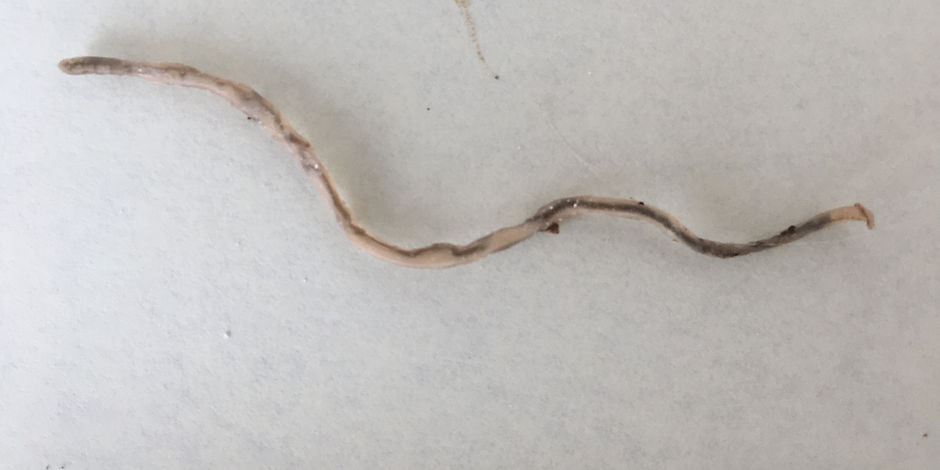There are many different types of parasites that can infect domestic cats, ranging from single-celled organisms to large roundworms and tapeworms. This project focuses on the most common parasitic roundworm to infect cats in the UK; Toxocara cati.
The parasite has a complicated life cycles, where it transitions through a series of life stages, from eggs to larvae to adult worms. These different life stages often live in different parts of the host body, or even in different species of host. At some stage in the life cycle, it is possible for rodents to become hosts.

Toxocara cati
Also known as the feline roundworm, adult worms live in the cat intestines. The worms lay eggs which are shed in cat faeces, which then contaminate the soil.
New infection occurs through accidental ingestion of infective eggs, for example as cats have contact with contaminated soil and lick their feet. The eggs hatch into larvae (immature stage of the parasite) which move through the body to the lungs, causing disease especially in kittens. The larvae are then coughed up and swallowed, returning them to the digestive system where they can develop into adult worms and lay more eggs.
Other methods of infection include transmission from mother to kitten during nursing, or most interestingly by consumption of infected prey items such as mice and shrews, known as paratenic hosts. When a rodent such as a mouse accidently eats parasite eggs in the soil the eggs hatch into larvae which are not able to develop into adult worms, but instead migrate to the eye, brain, liver and muscle. The larvae can resume development into adults if the paratenic host is then eaten by a cat. Therefore paratenic hosts in the environment can play a major role in parasite transmission. We need to continue regular deworming of cats that hunt and eat prey items, as they will become repeatedly infected.
As well as infecting cats and rodents, Toxocara cati can also infect humans, causing the disease Toxocariasis if the larvae are able to migrate to the eyes, lungs and brain. People who are in contact with soil such as young children and owners of dogs & cats have a higher chance of becoming infected. Studies suggest that tens of millions of people worldwide have been exposed to the Toxocara parasite. As a result, the World Health Organisation lists Toxocariasis as one of the Top 5 Neglected Parasitic Diseases that should be targed for public health action.
There are other forms (species) of the Toxocara parasite that can instead infect dogs and cattle.

